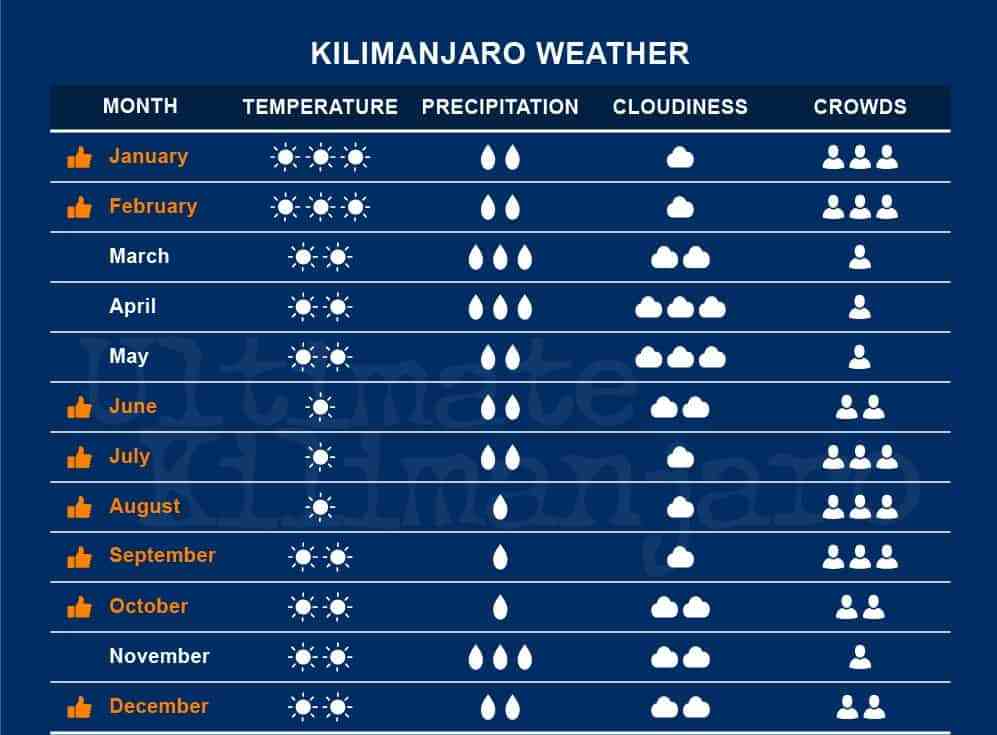Mount Kilimanjaro, often referred to as the “Roof of Africa,” is one of the world’s most iconic and sought-after trekking destinations. Rising majestically in Tanzania, this dormant stratovolcano offers adventurers an opportunity to conquer its peak, Uhuru Peak, which stands at 5,895 meters (19,341 feet) above sea level. But when is the best time to embark on this challenging journey? The timing of your Kilimanjaro climb can significantly impact your experience and chances of reaching the summit. In this article, we will explore the various factors that influence the best time to climb Mount Kilimanjaro.
Weather Conditions
The most crucial factor when determining the best time to climb Kilimanjaro is the weather. Tanzania experiences two distinct weather seasons: the dry season and the wet season. Each has its advantages and disadvantages for climbing the mountain.
Dry Season (June to October): The dry season, also known as the peak season, is widely considered the best time to climb Kilimanjaro. During these months, you can expect clear skies, minimal rainfall, and relatively warm temperatures. The lack of precipitation reduces the risk of muddy trails and offers stunning panoramic views. July to September is particularly popular, with the clearest skies.
Wet Season (November to May): The wet season is characterized by heavy rainfall, which can make the trails slippery and less enjoyable. It is generally not recommended for climbing, especially for those inexperienced in trekking. However, the shoulder months of November and May can be considered if you prefer a quieter experience and are prepared for the possibility of rain.
Temperature
Temperature variations on Mount Kilimanjaro can be extreme, with temperatures dropping significantly as you ascend. The best time to climb Kilimanjaro with regards to temperature is during the dry season. In the daytime, temperatures at lower altitudes can range from 20°C to 30°C (68°F to 86°F), making for pleasant trekking conditions. At night and higher altitudes, temperatures can drop to -10°C to -20°C (14°F to -4°F), so be sure to pack appropriate cold-weather gear.
Crowds and Availability
The dry season, particularly from July to September, sees the highest number of climbers on Kilimanjaro. If you prefer a quieter experience with fewer climbers on the trail, consider the shoulder seasons (October, November, and May). These months offer more solitude and flexibility in choosing your route and campsite.
Wildlife and Scenery
For wildlife enthusiasts, the best time to climb Kilimanjaro might coincide with the dry season. During this period, the mountain’s slopes are lush and green, and wildlife is more active in search of water. You may spot various animals and birds, adding an extra layer of excitement to your trek.
Full Moon Summits
Climbing Kilimanjaro during a full moon can be a magical experience. The added illumination from the moonlight makes summit night ascents less challenging and provides a surreal atmosphere. Check lunar calendars to plan your climb during a full moon if this appeals to you.
Climbing Routes
Kilimanjaro offers several trekking routes, each with its own unique characteristics. The Machame and Lemosho routes are known for their scenic beauty and are best enjoyed during the dry season. The Marangu route, often called the “Coca-Cola” route, is accessible year-round, but summit success rates tend to be higher during the dry season due to favorable weather conditions.
